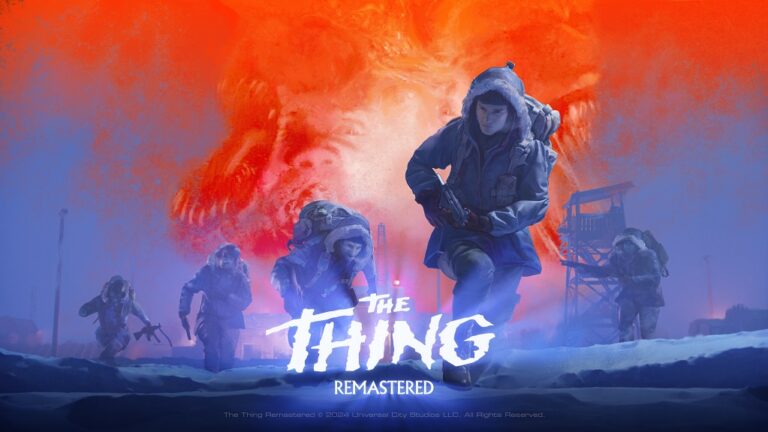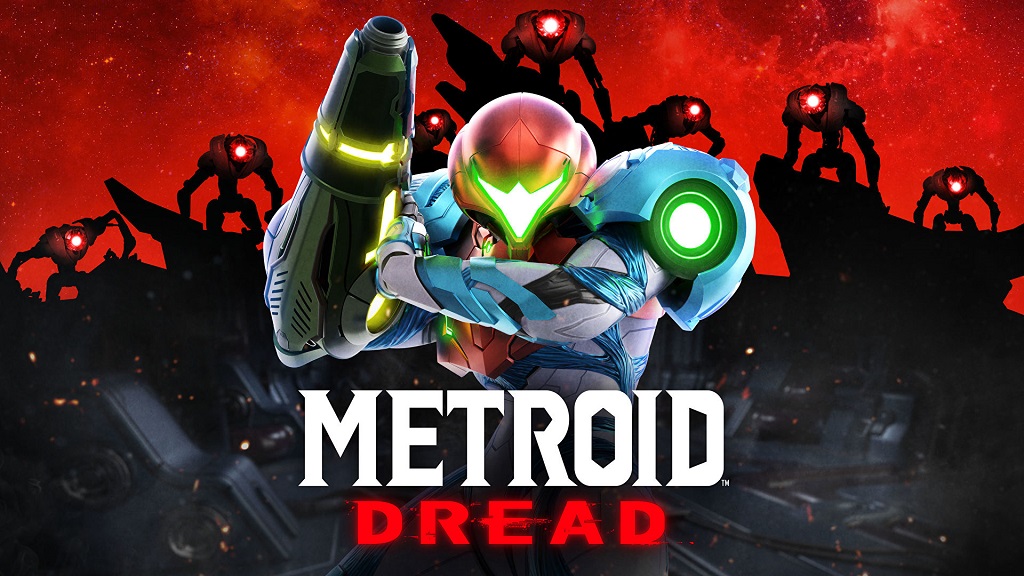
After nearly 20 years, Nintendo finally announced that they were bringing the Metroid series back to its roots with a new game featuring the classic gameplay style, with Metroid Dread. Along with the return of 2D Metroidvania-style gameplay, Dread also promised to have a darker, more horror-like vibe overall, which immediately drew my attention when it was announced earlier this year. After hearing that Nintendo had outsourced the development of Dread to Spanish studio MercurySteam (who was also responsible for the last good Castlevania game, Mirror of Fate), I became even more optimistic about how it could turn out.
While I certainly wasn’t expecting the experience to be a true horror game by any means, I was curious to see how far they were willing to push design elements like darkness and isolation. Even though those elements have always been present in the series to some extent, the developers seemed to be doubling down on them for Dread.
Does Dread live up to these promises of upping the ante with some horror-like elements? And how does it stack up amongst the hundreds of Metroidvania-style games that have been released in the series’ nearly 20-year absence? Let’s take a closer look and find out.
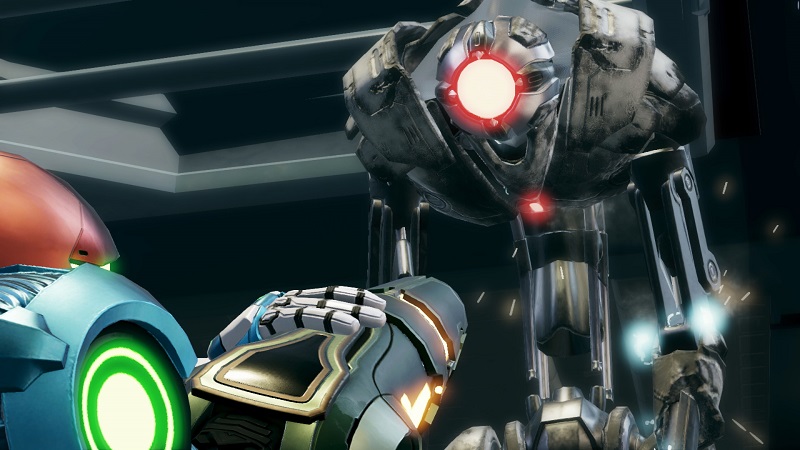
Starting with the gameplay improvements made with Dread, there’s a whole slew of them, and all for the better. Aside from the classic 2D Metroid gameplay on showcase here, there’s the addition of the chase sequences, which are one of the most “horror” parts of the experience.
In each major area, there’s an encounter with a nearly-indestructible robot that begins a high-stakes chase through a darkened and dead area, making for some extremely tense moments that don’t feel very far off from many horror games, especially since these robots also kill you instantly if they catch you. Just think along the lines of if there was a Terminator game that felt a lot like the first movie.
These sequences add a very welcome level of tension, fear, and uniqueness to the gameplay that’s not found too often in this type of game, and these sections also play out as stealth puzzles while also being terrifying chase sequences, since the only way to stop them is to reach a certain room without getting caught. Once you get to the appropriate room, you acquire a temporary boost of power that allows you to take down the robot, giving an extremely satisfying conclusion to all of these fights.
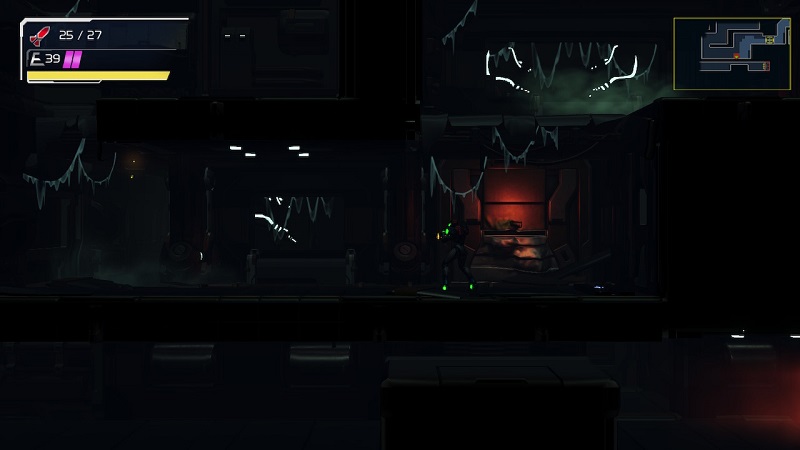
Another move that’s new to the series, but not necessarily new to Metroidvanias in general, is a melee/parry move that has several different clever uses and is a great addition to the gameplay overall. This can knockback and stun normal enemies and most bosses, which gives more time to go for the kill and adds a nice layer of strategy to the combat.
However, for the big robot encounters, it serves as a parry to avoid their instant-death attack. The only caveat is that the timing window for pulling off the parry on the robots is only a few milliseconds, which the game warns you about right in the beginning. This is not something you can rely on, with how small the window is, and it keeps the robots as a major threat, even though there’s technically a small window of surviving their attack on occasion.

On the topic of boss encounters, most of the bosses here have a pretty steep learning curve of difficulty that may turn off many players who aren’t accustomed to very fast and precise 2D combat. While these fights can be a great and satisfying challenge to overcome, there were a few times throughout where patience was worn pretty thin.
The other major point of disappointment with the boss encounters is that it’s never really communicated clearly with the player that the parry ability must be used several times in every boss fight in order to actually progress or do damage. It’s lightly insinuated in the very beginning of the game, but never explained well in a tutorial of any kind, and it leads to some confusion during the later encounters.
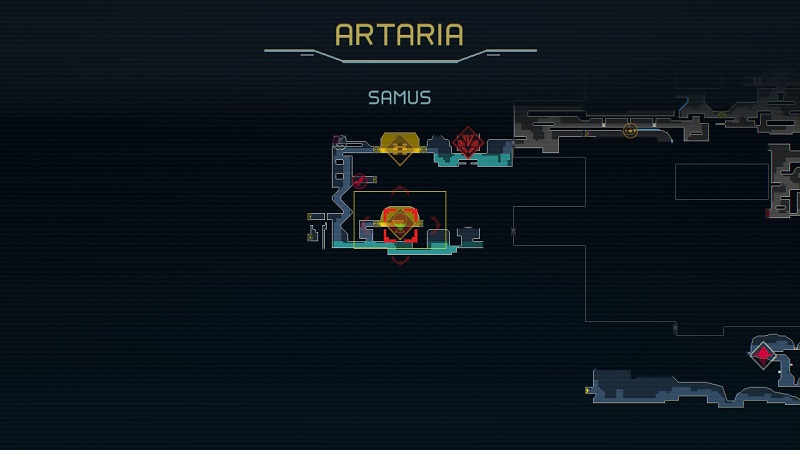
The design of the areas and the map as a whole is very well-done, with hidden secrets everywhere, including some that really test your puzzle-solving and maneuvering skills, making each one feel satisfying to obtain. This also comes along with a well-designed and robust map system that very clearly tells you all the details of every single object, door, and block that you encounter, as well as having a system for setting markers wherever you choose.
All the gameplay elements here come together to form a game that feels like a fresh new addition to the series, but also somehow managing to feel like more of the same, which can be conflicting at times, but generally feels well-done and admirable. At the same time, while this feels like a great new entry for the series, and possibly the best game in the series so far, if you take some steps back and compare it to many of the other similar games released in recent years, it feels like the formula that Metroid helped to spawn all those years ago has been handled better in other games lately.
Games like Castlevania: Aria of Sorrow, Castlevania: Mirror of Fate, Ori and the Blind Forest, Ender Lilies, Touhou Luna Nights, Deedlit in Wonder Labyrinth, Momodora: Reverie Under the Moonlight, Bloodstained: Ritual of the Night, Shantae and the Seven Sirens, Shadow Complex, Guacamelee, and a few others all come to mind as stronger or more unique utilization of this gameplay style.
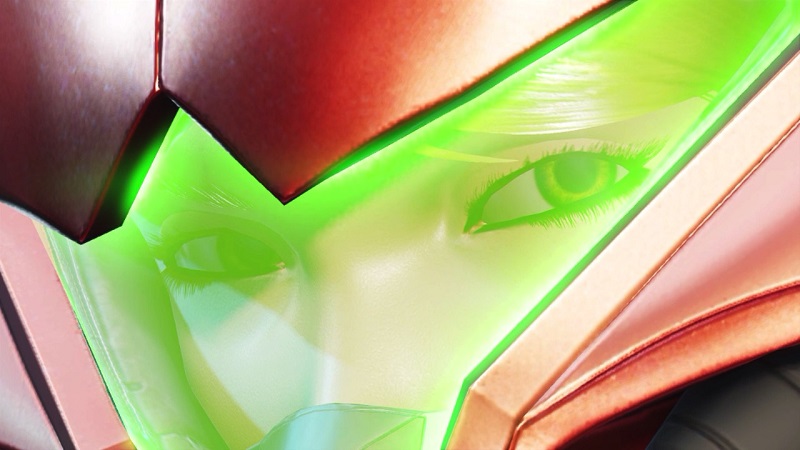
As much as the gameplay has changed for the better, the story and narrative have essentially gone back to the complexity of the older 2D Metroid games, reducing Samus to a nearly faceless and voiceless protagonist with only one line of dialogue in the entire game. While many people may not have cared for the characterization they attempted with the previous entry to the series, Other M, it definitely added a sense of complexity and character that felt needed to take the series forward.
Stepping backward in this way also makes the experience feel lesser than many of the other modern Metroidvania-style games, many of which have wonderful, complex narratives and world-building on top of the great gameplay, making for a much more well-rounded experience. This is fairly typical of most Nintendo games, which tend to take the safe route and shy away from having deep plots, a cohesive narrative, or deep characterization of the beings who inhabit it, but it feels especially lacking here in a game that could’ve done much more with such a long history to pull from.
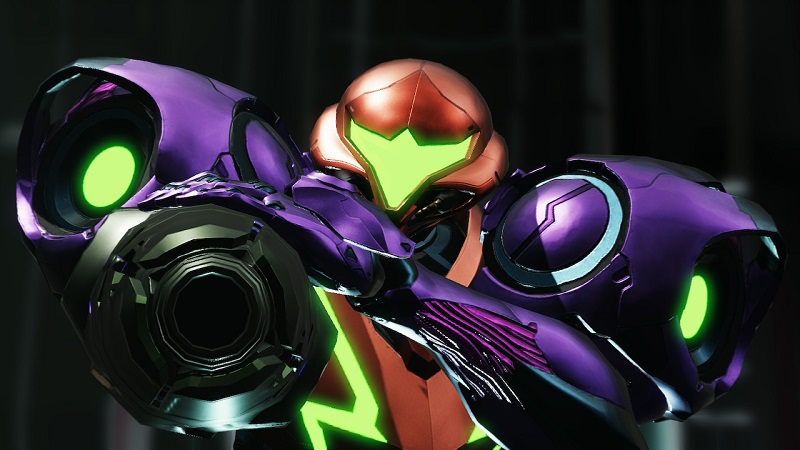
As for the art design, while the new focuses on darkness and some creepy elements are very welcome, the overall art design feels a little too generic sci-fi art to really stand out all that much, and the way much of it is rendered in the 2.5D style leaves a bit to be desired. While Samus’ suit looks quite good and stands out more than ever before, the color choices used on the suit can be somewhat off-putting, and the way most light sources reflect off of it feels unnatural and weird.
Most of the enemy and area designs are very simple and don’t do a whole lot to differentiate themselves from each other, aside from a short few. Most enemies and environments are missing a certain extra amount of character or uniqueness that could’ve made it more memorable. Some of the boss designs are fairly memorable, but all of them are lacking a certain level of detail that makes many modern Metroidvania bosses pop right off the screen.
While it makes sense that they may have been trying to drive home the feeling of isolation with the bleakness of the world, it often makes the world feel empty in a way that gives less incentive or motivation to keep exploring. It’s constantly walking the tightrope of feeling exciting and feeling like you’ve already been there and done that.
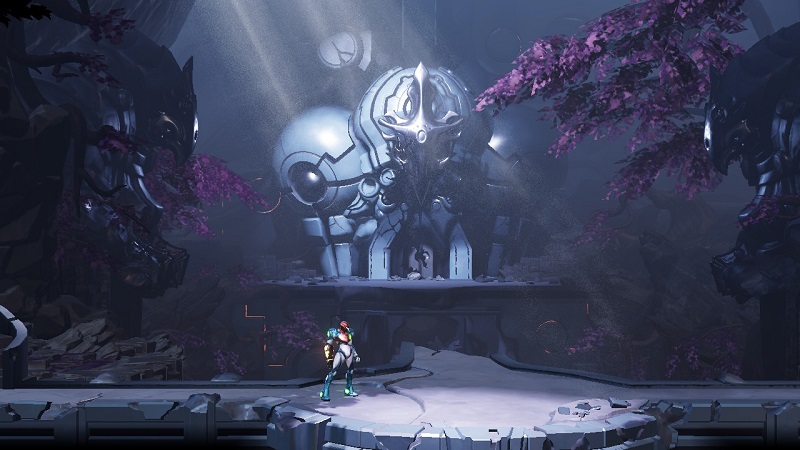
As far as the sound design, it’s another pain point for the game in many ways. Similar to the art, while the more atmospheric and creepy or foreboding music is a nice touch and welcome addition to the game, it also lacks any of the more energetic tracks that would get you pumped up for a battle or get stuck in your head after playing. The previous games in the series usually had at least a few of those tracks and they feel missing here.
The sound effects are also very basic, mostly consisting of the usual Metroid-type sounds with sci-fi blasters and slick movement sounds, but there’s really not much else to note here. As mentioned previously, there’s very little voice acting for the game at all besides a monotone robot NPC at some save stations, so there’s not much to say about it.

The controls are extremely tight and responsive, which is extremely important with such challenging combat encounters and similarly complex puzzles based on movement or timings. The only unfortunate part is that playing with the D-pad is not an option under any circumstance, so all movement has to be done with the analog stick, which doesn’t work terribly well for a game like this where precise and subtle movements are needed.
This doesn’t ruin the game by any means, but having an option to use the D-pad for movement would have made the game that much better in the control department. Also of note, as is with most games, the JoyCons do not suit the game very well. The discomfort of using the analog sticks while frequently holding the shoulder buttons is something that no one should have to experience, so the Pro Controller is the way to go.
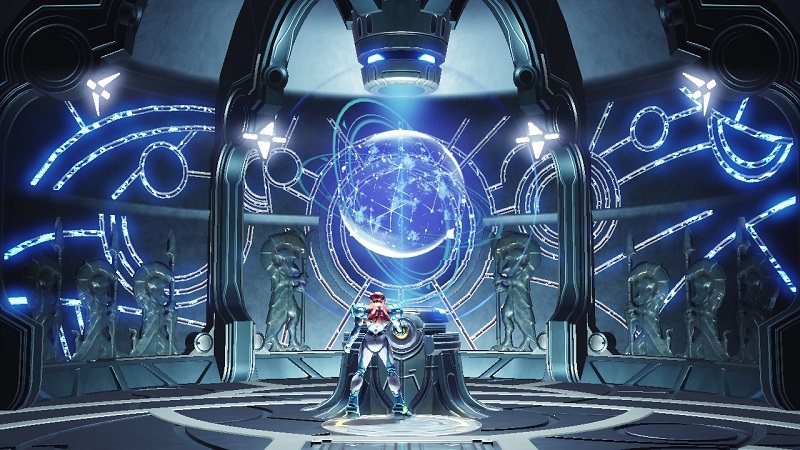
As for the technical performance, unfortunately, the Switch hardware doesn’t do the game any favors. While it looks great in handheld mode, once you start outputting to an HD monitor, the image gets washed out and all the jagged edges become more visible. This is pretty normal for Switch games, but it feels especially unfortunate since Dread looks so sharp on the handheld screen.
As far as framerate performance, most of the game runs flawlessly at 60fps, which is important for a game with such intense action, but there are a few areas or battles towards the end where performance dips pretty heavily, though it’s mostly just in normal combat encounters, thankfully not during the much tougher boss encounters.
The load times can get pretty long when moving between different areas or going in teleporters, with some load times being around 20-30 seconds, but thankfully you don’t have to load new areas that often, so it never became too much of a burden.
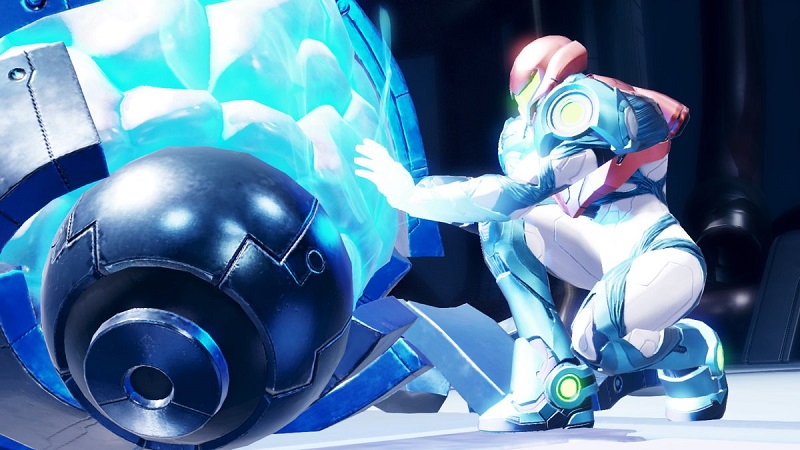
A normal playthrough for the game will likely be around 7-10 hours for most players, depending on how much time is spent dying and retrying on bosses or getting lost in between progression points, and it feels like a very satisfying length that doesn’t overstay its welcome. It keeps the progression coming at mostly just the right speed for the entire experience, even if the lack of enemy types can feel a little repetitive or tiresome after a while.
However, despite the pacing and length feeling great, we also have to consider that this is a $60 game and has almost no replay value after finishing the game, which makes it a much harder sell in context. It’ll be up to personal preference whether you’re a big enough fan of the series to pay that much, but when so many other superior Metroidvania titles have been released recently and most of them charge no more than $40 at launch, it puts the price in perspective.
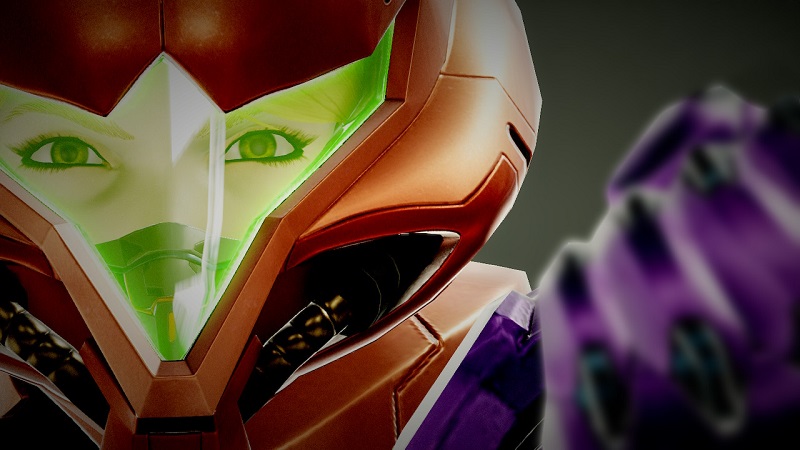
While Metroid Dread is undoubtedly one of the best Metroidvania games in recent years, it still has a few pitfalls that make it less impressive than many of the other newer games of this style that have been released in the last 20 years. It’s still a very worthwhile experience and easily one of the best titles in the entire series, if not the best overall, but it leaves a little bit to be desired compared to its more modern peers.
 (8 / 10)
(8 / 10)
Great
 (8 / 10)
(8 / 10)

